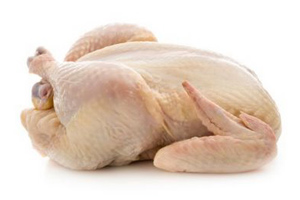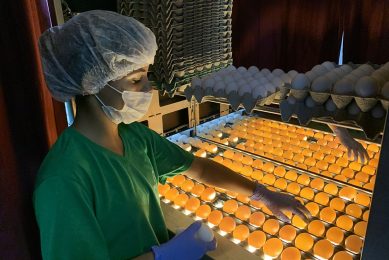‘US farmers market chickens carry more pathogens’

Raw, whole chickens purchased from farmers markets throughout Pennsylvania contained significantly higher levels of bacteria that can cause foodborne illness compared to those purchased from grocery stores in the region, according to a small-scale study by researchers in Penn State’s College of Agricultural Sciences.
Of 100 whole chickens purchased from farmers markets, 90% tested positive for Campylobacter and 28% harboured Salmonella.
By comparison, during the same period, 28% of raw, whole, organic chickens purchased from grocery stores were found to contain Campylobacter bacteria, and 20% tested positive for Salmonella. Fifty two percent of raw, whole, nonorganic, conventionally processed chickens from the grocery stores tested positive for Campylobacter and 8% of those contained Salmonella.
Overall, the chickens purchased at the farmers markets carried higher bacterial loads than the birds purchased at grocery stores.
The research, published online in the Journal of Food Safety, sheds some doubt on the widely held belief that locally bought poultry is safer, according to lead researcher Catherine Cutter, professor and food safety extension specialist in the Department of Food Science.
“Some people believe that local food is safer, but we want to caution that’s not always the case,” she said. Cutter suggested that concerns about antibiotic resistance and animal-welfare issues in large animal-agriculture operations that supply food to supermarket chains may explain why consumers are switching to locally grown and locally processed foods.
“We hope this small study will lead to more extensive research to determine why we are seeing the levels of pathogens in these products and to find ways to mitigate them,” she said.
The significantly higher bacteria levels in chickens sold at farmers markets prompted the researchers to look for a cause.
“In the last decade, farmers markets have become an increasingly important source of food products for millions of Americans,” said Joshua Scheinberg who conducted the research for his master’s degree in food science.” The popularity of farmers markets is no doubt a result of consumer demand for locally produced foods.”
“As patronage continues to increase at farmers markets and other direct-to-consumer marketing channels, the risks associated with purchasing fresh products directly from the farmer or vendor must be evaluated,” Scheinberg added. “Potentially hazardous foods, such as milk, cheeses, and raw meat and poultry, also are popular at these venues.”
Cutter and Scheinberg speculate that interventions, such as antimicrobial rinses, can lower pathogen levels on poultry carcasses.
“We are not doing the research to scare consumers or put people out of business; we’re here to improve public health,” she said. “We can train farmers and vendors to produce a safer product that won’t make people sick. This approach also has the potential to help consumers feel more confident about buying their locally grown and processed products.”
Scheinberg’s master’s thesis, “Comparison of Poultry Products Obtained from Farmers Markets and Supermarkets in Pennsylvania,” is available online.
 Beheer
Beheer








 WP Admin
WP Admin  Bewerk bericht
Bewerk bericht